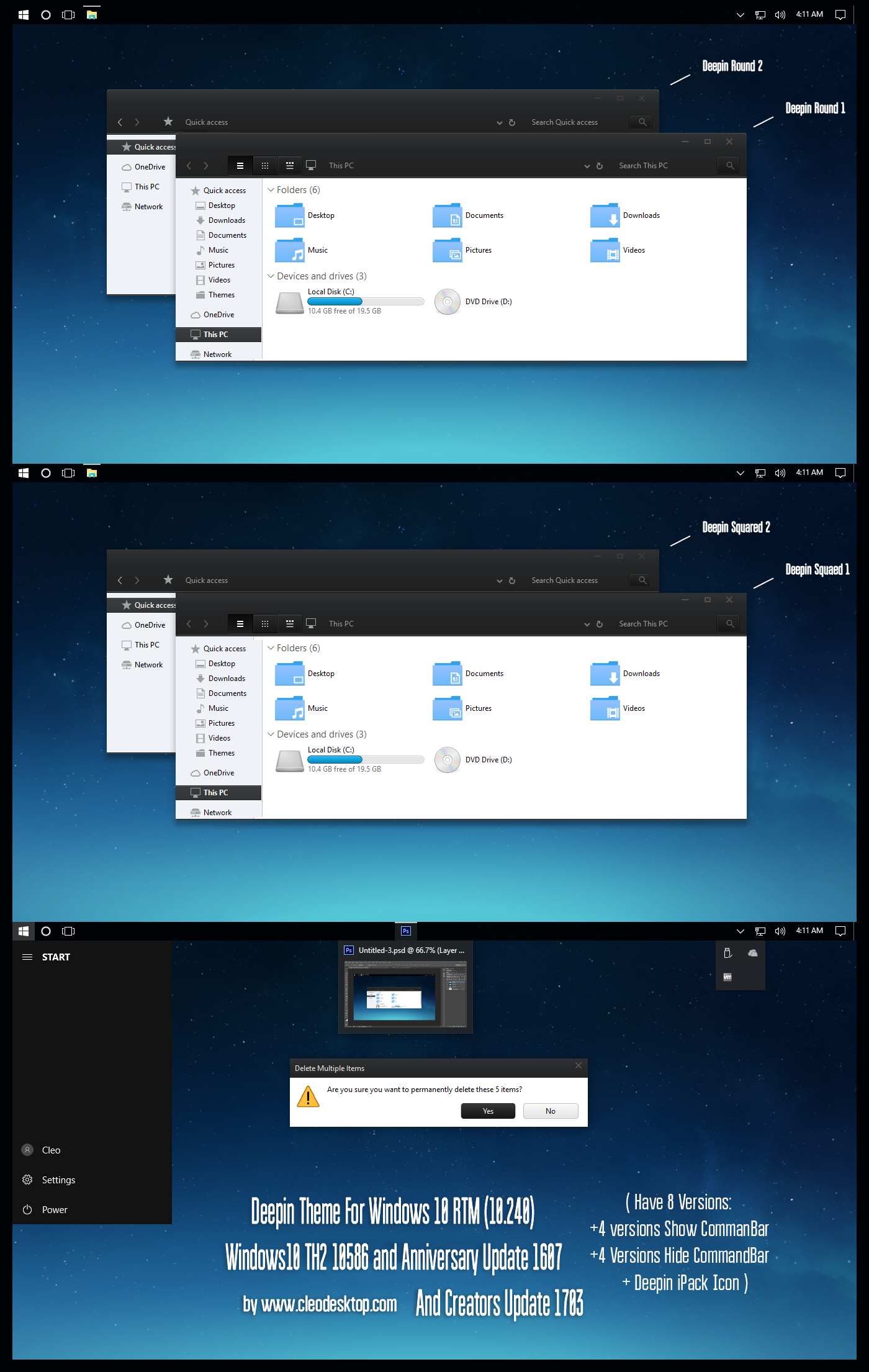

My goal behind Custom Windows is to solve problems not to create some more. One example is Microsoft Words which gets a dark background in the writing section. Thus by using a Full Forced Dark Theme some apps can become difficult to use. The Windows UI was never meant to be dark in the first place so most apps make use of the Windows UI in this way. All my Dark Themes are Dark Mode only compatible and I'll explain why. The first category only applies the dark UI to Windows Explorer and other Dark Mode compatible apps, while the second category is trying to force the dark UI on most of the Windows UI elements.

If you're into Dark Themes, then you have to understand that these come in two flavors: Dark Mode compatible themes and Full Forced Dark Themes. So in order to style the titlebar and caption buttons of UWP/modern apps (like the Settings panel, Calculator, Windows Mail, Calendar, etc.) I've created matching Curtains styles for each theme which you can find in the Matching Extras section of the included README file. The first thing you have to understand is that Custom Windows themes apply only to Win32/classic apps that inherit the Windows UI and don't have a skinning system of their own like for example Winamp (a media player that uses its own skins) or the Microsoft Office apps (that have their own custom user interface).

If you're in a hurry, jump ahead to the HOW-TO GUIDE below. Hey guys, in case you're new to Custom Windows Themes, here is some information that you might find useful and a guide explaining how to install and use a custom theme.


 0 kommentar(er)
0 kommentar(er)
